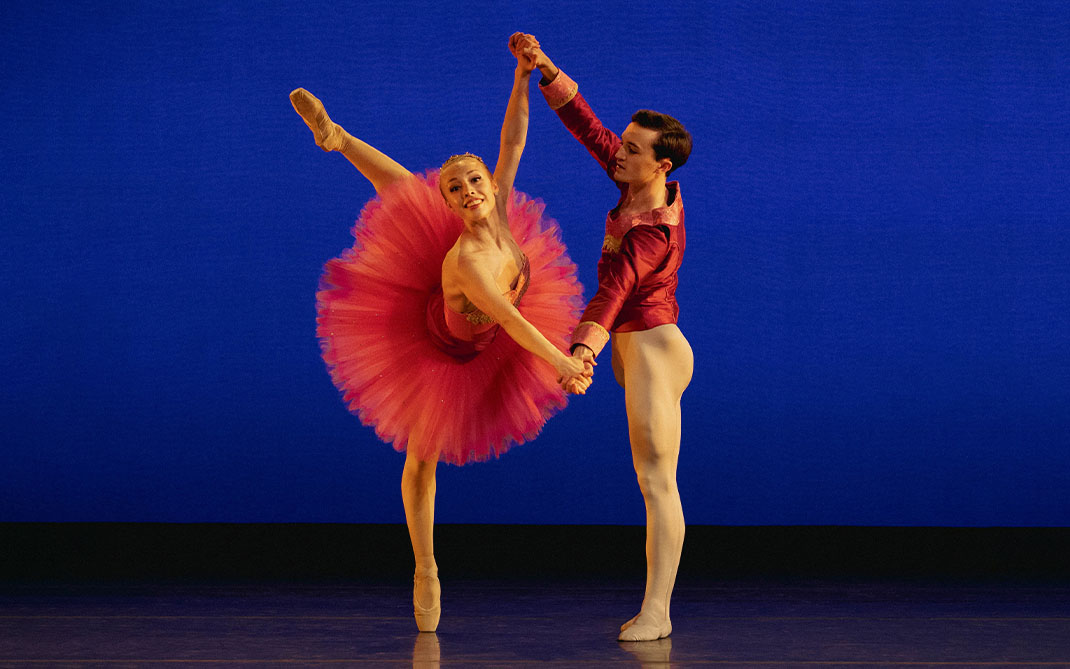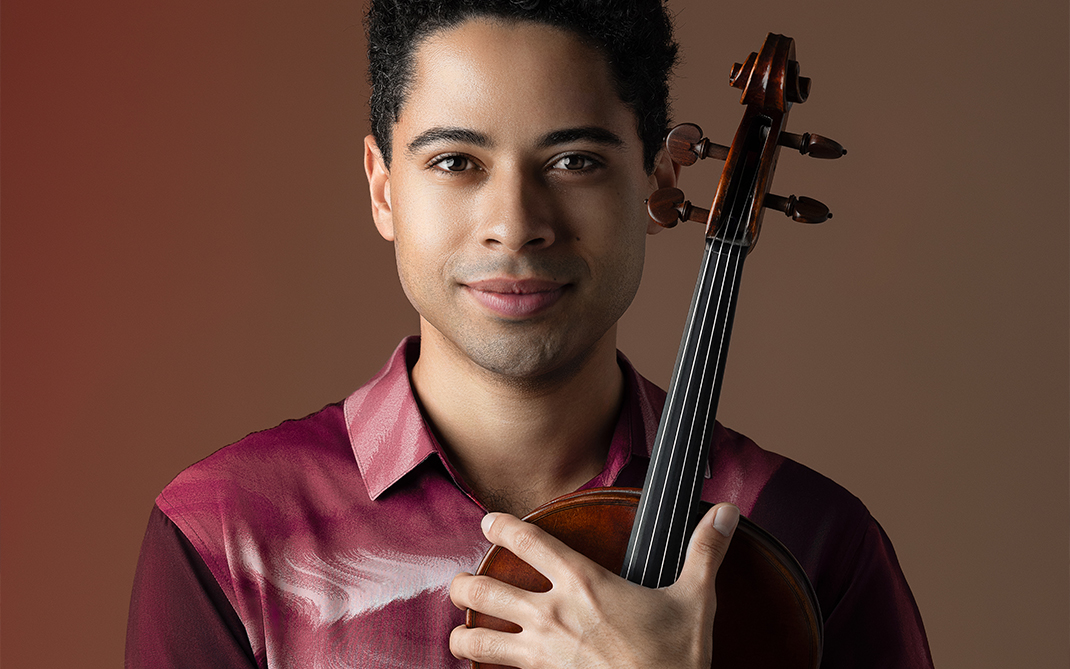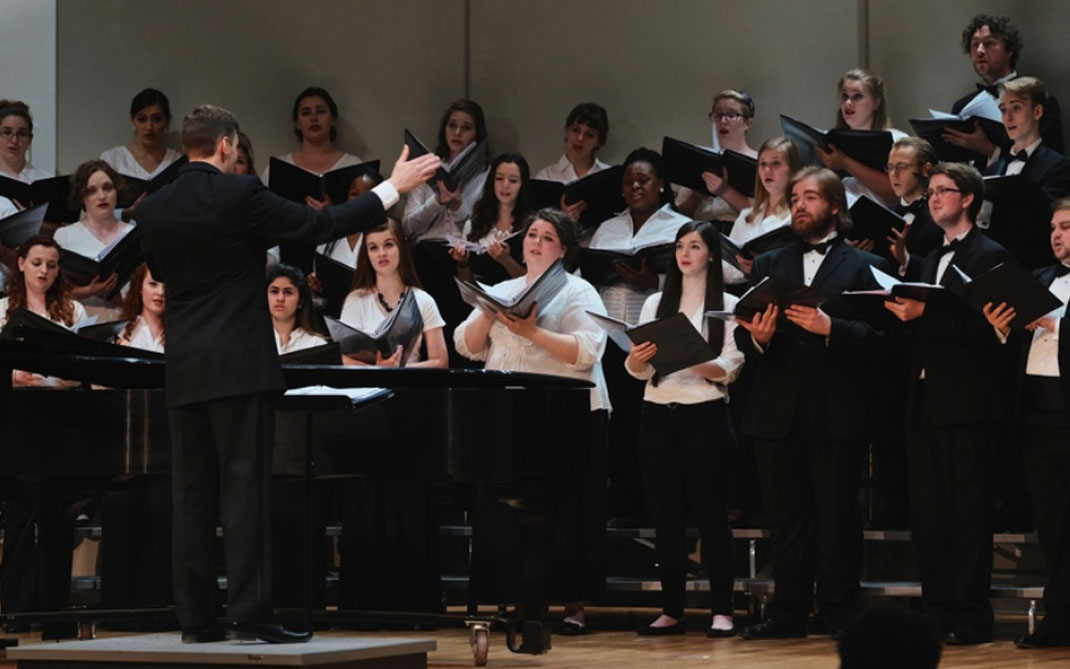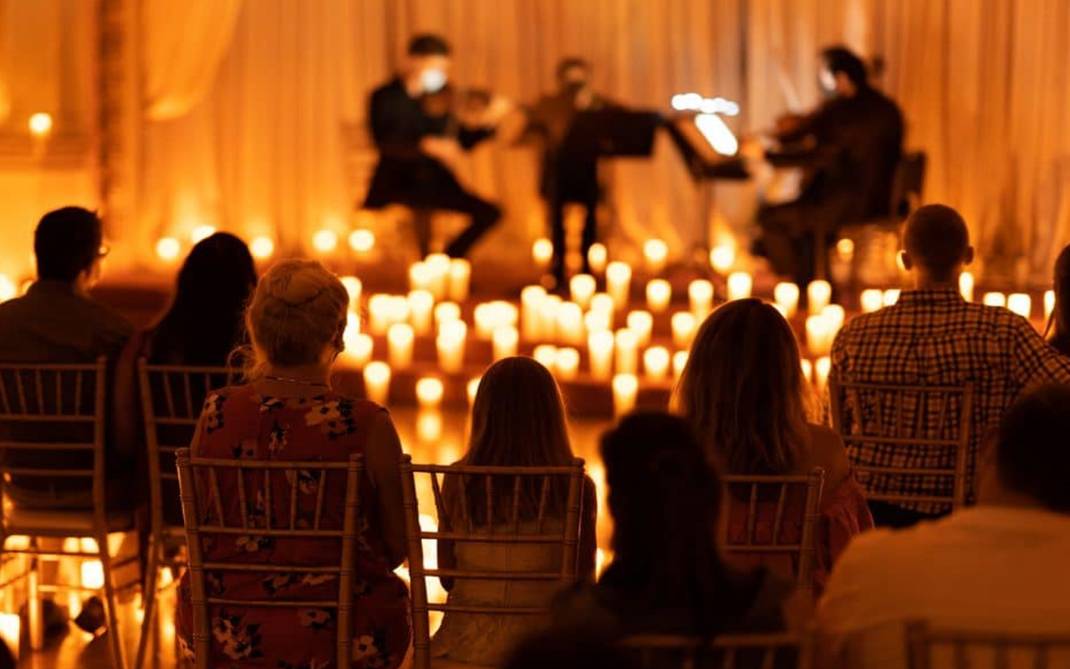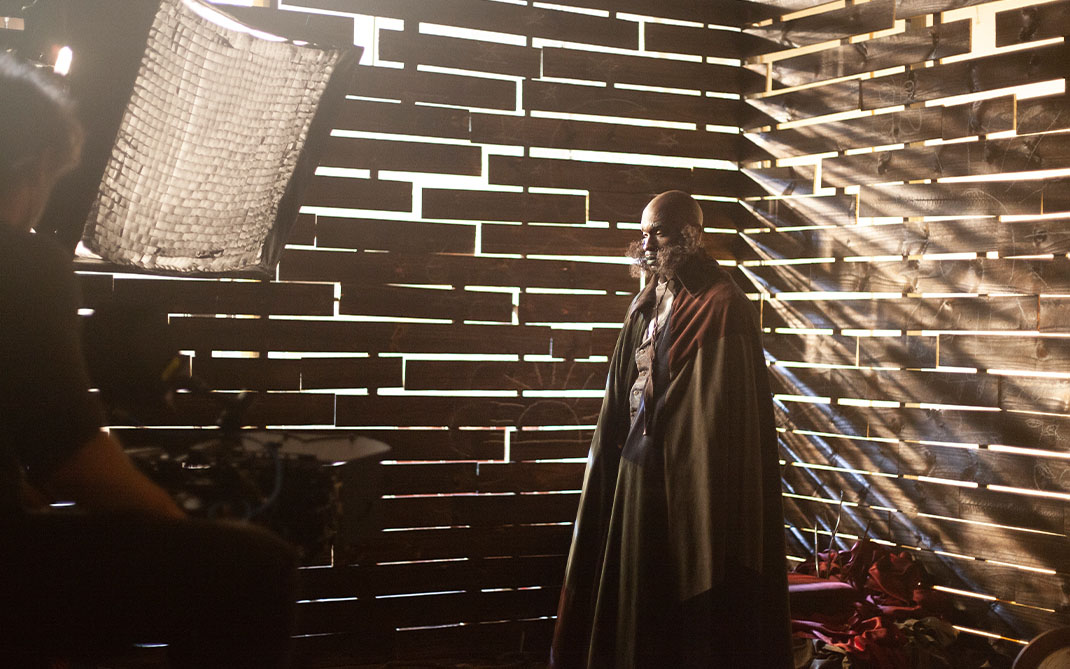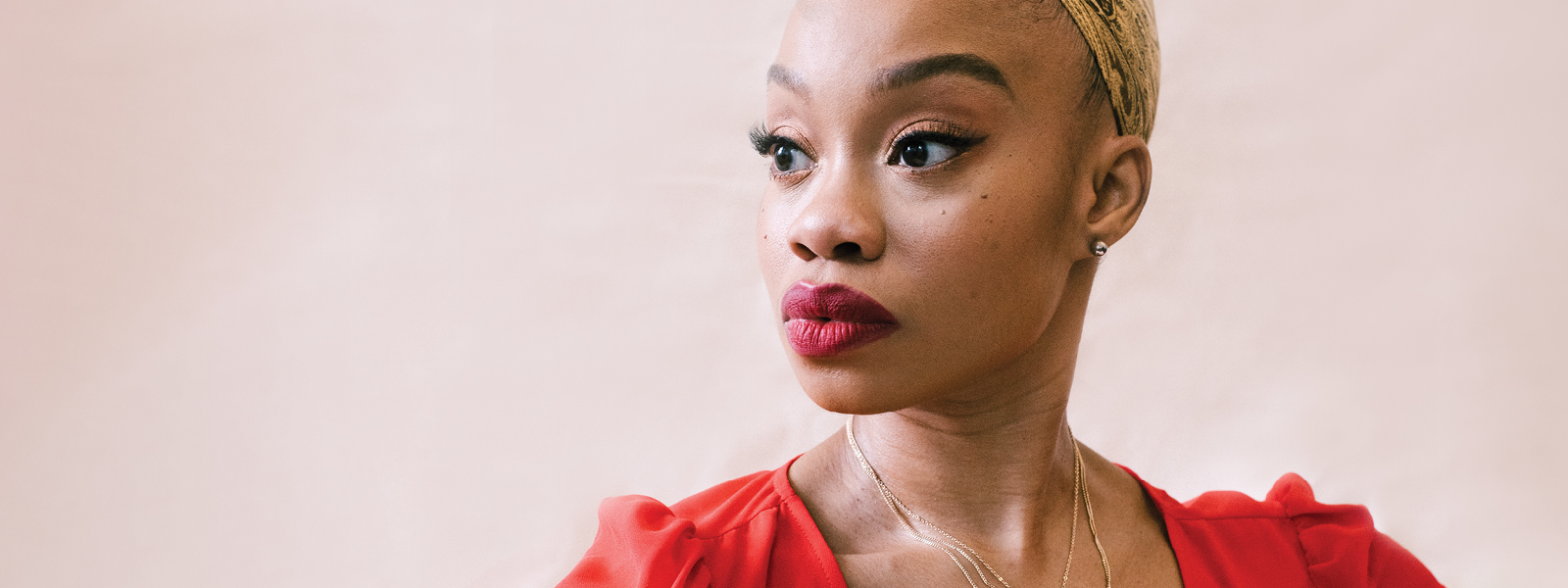The ever-expanding universe of Camille A. Brown
From UNCSA to Broadway and beyond, Brown stays true to her own voice as her vision grows
In Terence Blanchard’s opera “Champion,” seen this past spring as part of the Metropolitan Opera season, dance is integral to telling boxer Emile Griffith’s profoundly moving life story. In a magnificently jubilant early number, choreographer Camille A. Brown (B.F.A. Dance ’01) uses the rhythms and dances of the African diaspora to drop the audience right into a St. Thomas carnival, evoking the spirit of Griffith’s youth in the U.S. Virgin Islands. Later, she reconfigures the Twist and the Mashed Potato, setting these classic social dances against Blanchard’s jazzy score to create the defiant and funky vibe of a gay bar Griffith frequents. She even pored over boxing warm-up videos to craft scenes that offer a realistic shape to the sport portrayed onstage, drawing out its more percussive qualities.
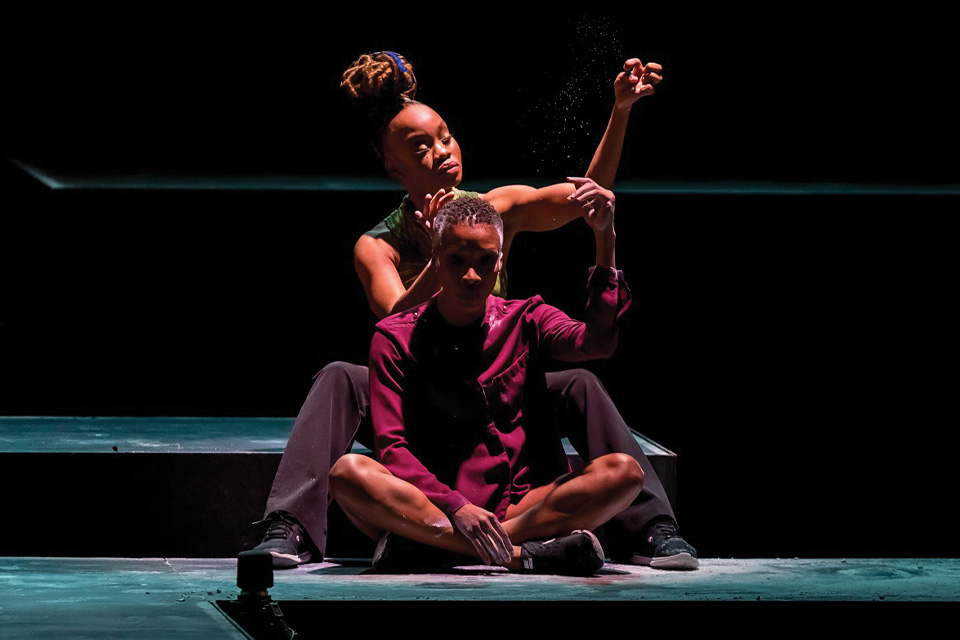
Camille A. Brown in "BLACK GIRL: Linguistic Play" / Photo: Sharen Bradford
Brown’s ability to meticulously chart this emotionally resonant journey with rhythm and movement — one that is in dialogue with generational and cultural touchstones — makes her work critically successful and popular with audiences.
“I've always loved social dance,” Brown said. “It sets place and time and the idea of culture for me. It’s important for every scene I’m building to have a seed, whether it’s the music, a movement, a place, a time.”
Frequent collaborator Maleek Washington, who has worked alongside Brown as an assistant choreographer for theater and opera productions and danced in her work as a member of Camille A. Brown & Dancers, likens her to the legendary American dancer, choreographer and anthropologist Katherine Dunham.
“They are both anthropologists,” said Washington, noting the ethnographic underpinnings of Brown’s creative process. “When she looks at a work, she is looking at the time period and the social class, every notion of what it should look like. And that's why she is an amazing choreographer,’ because that anthropological mindset of hers can switch into gear through research.”
Camille has this ability to situate a culture, a history, a vibe of Blackness into her work. There's something that's always very authentic about it.
Endalyn T. Outlaw, dean, School of Dance.
Alongside such fastidious research, Brown’s relentless work ethic and commitment to following her artistic voice have paved the way for a multifaceted career. Her choreography pushes on the boundaries dividing dance styles and continues to reach beyond the discipline of dance. In 2021, she became the first Black director on a mainstage production at the Metropolitan Opera, co-directing “Fire Shut Up In My Bones” with James Robinson as well as choreographing. In 2022, she directed the Broadway revival of Ntozake Shange’s “for colored girls who have considered suicide/when the rainbow is enuf,” making her only the second Black woman to direct and choreograph a Broadway show. (The first was Dunham in 1955.)
Her accolades are many and include Tony nominations for both her choreography and direction, the prestigious Guggenheim Fellowship, a Dance Magazine Award, an Obie Award for Sustained Excellence in Choreography, a Princess Grace Statue and an International Society for the Performing Arts Distinguished Artist Award. The 2022 production of "Mr. TOL E. RAncE" — part of her trilogy exploring race and identity — was nominated for a 2023 Bessie Award for Outstanding Revival.
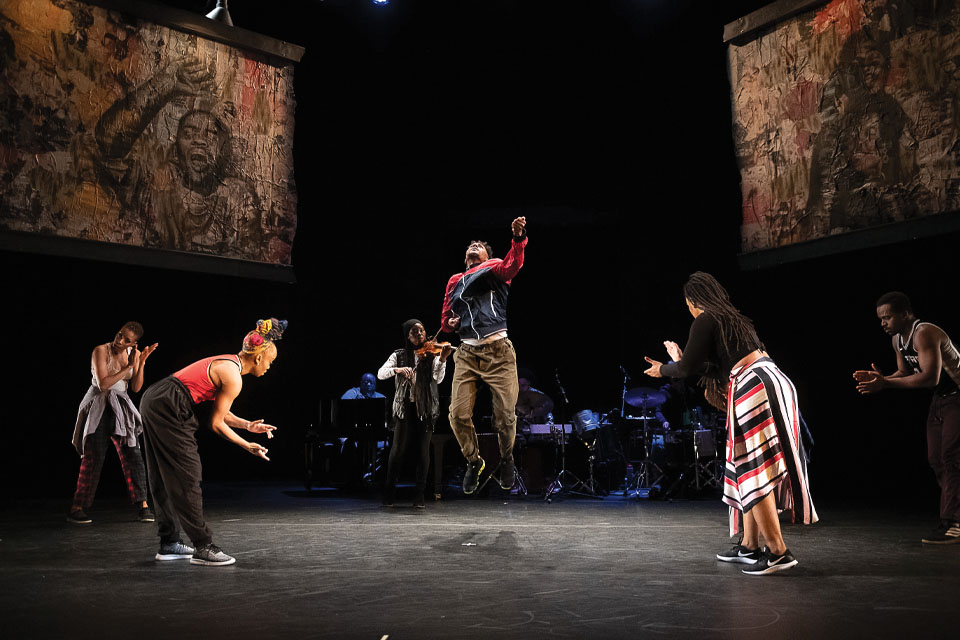
"Mr. TOLE E RAncE," 2022 / Photo: Christopher Duggan
This past May, she received an honorary Doctor of Fine Arts from UNCSA as well as an honorary Doctor of Humane Letters from Drew University. In Brown’s UNCSA commencement speech, she offered the Class of ’23 insight into the resilience it takes to make it as an artist and stay true to yourself.
“Rejection has been my greatest liberator,” she said. “The rejection of not always fitting into the ideal body led me to find my own voice through movement. After graduation, I would continue hearing a lot of no’s. But as demonstrated time and time again, a no would always lead to a yes and that yes was far greater than the original no.”
“She's a mighty force that overcame some challenges and was successful despite those things, not because of those things,” said UNCSA Dean of Dance Endalyn T. Outlaw. “I thought she would be ideal to speak to a graduating class about to embark upon their journeys. They're going to face many, many challenges that will require that they create opportunities and yeses for themselves.”
Brown grew up in Jamaica, Queens, and took her early dance classes — ballet, tap and African in the 3- to 6-year-olds group — at The Bernice Johnson Cultural Arts Center. There she met teachers Carolyn DeVore, Brian Hawthorn and Roger C. Jeffrey, who became important mentors.
“The three of them really have shaped how I think about what it means to be a dancer,” Brown said. “They taught me that everything is intentional and has a purpose, and to give your best and do it to your fullest. They helped me to set my own standard that was really, really high.”
At the same time, she was developing an awareness of the social dances that have become a hallmark of her work.
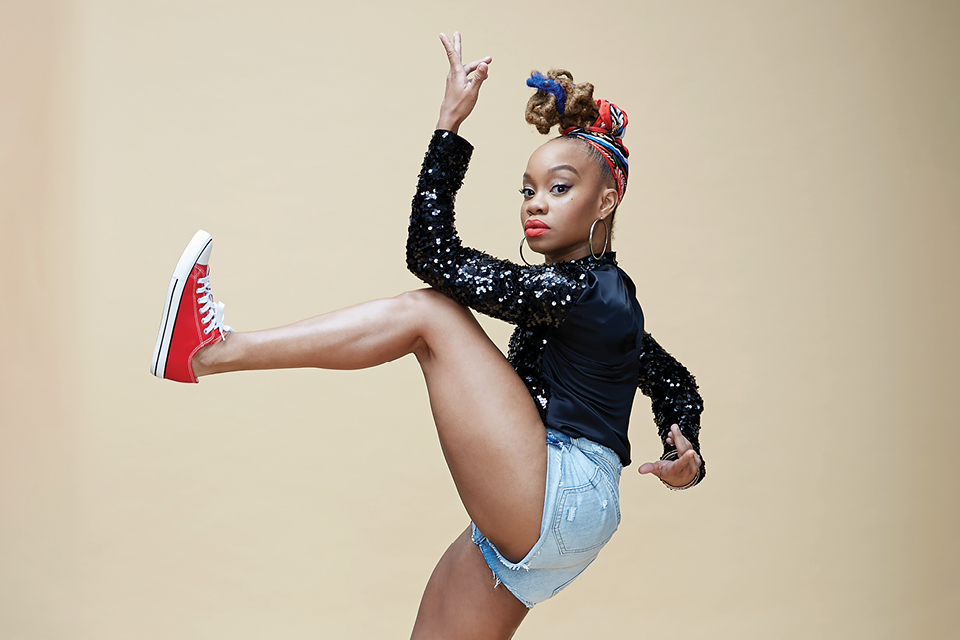
Photo: Courtesy of Camille A. Brown
“‘Soul Train’ was still on when I was growing up,” Brown remembers. “I watched Michael Jackson and Janet Jackson videos. And my mom introduced me to musicals.”
She attended Fiorello H. LaGuardia High School of Music & Art and Performing Arts, the school that inspired the film and television show “Fame,” featuring Debbie Allen. Perhaps unsurprisingly, Allen became one of Brown’s role models. Allen’s story of being denied admission to UNCSA prompted Brown to consider the school for her undergraduate study.
“I wanted to go to (University of) North Carolina School of the Arts because Debbie Allen wanted to go there,” Brown shared.
Brown related to Allen’s experiences with body type bias as a fellow Black dancer. “My whole training, I had issues with not being the ideal body type and not being cast for certain things because I was told I wouldn't fit the costume,” she said. “But my mom taught me to focus on something you love and find your voice. And I found mine during our composition classes with (Associate Professor for Contemporary Dance) Trish Casey. She asked us to think about what our personality moves us to do, and it was really exciting to see how our personalities lived in our movement.”
Later, Brown would absorb more about the structure and craft of dance-making from Associate Dean for Contemporary Dance Brenda Daniels.
“Slowly, through the four years, I was really understanding what it meant to create and how to create,” Brown said. “I have my own process now, but those tools gave us a springboard to go in our own directions.”
I've always loved social dance. It sets place and time and the idea of culture for me. It’s important for every scene I’m building to have a seed, whether it’s the music, a movement, a place, a time.
Camille A. Brown
After graduation, she danced six seasons with Ronald K. Brown/EVIDENCE, absorbing the dances of the African diaspora before launching her own concert dance company that excavates a myriad of African American stories and identities. Over the years, she has folded in numerous choreographic credits working in theater, on and off Broadway, film and television, and in more recent years, opera. Her titles have also grown to reflect her new role as a theater and opera director. Along the way, she has nurtured a thriving company, developed the “Social Dance for Social Change” school under her company’s “Every Body Move” community engagement platform, and built a broad professional network that has helped many other careers lift off.
Brown’s creative process now, more than two decades later, is interrogative, instinctual, and collaborative, reflecting the low ego nature of her practice — a practice that prizes listening and being in community.
“I ask a lot of questions,” Brown said. “How do I want an audience to feel? How do I want to feel? What do I want to see on stage? What is the idea? What does the music sound like based on the theme we're talking about? What does my spirit want to talk about now? And then from there, I go.”
When she was brought on to direct and choreograph the revival of “for colored girls who have considered suicide/when the rainbow is enuf,” those questions also came with the burden of history: What and how much of a cherished past production should stay?
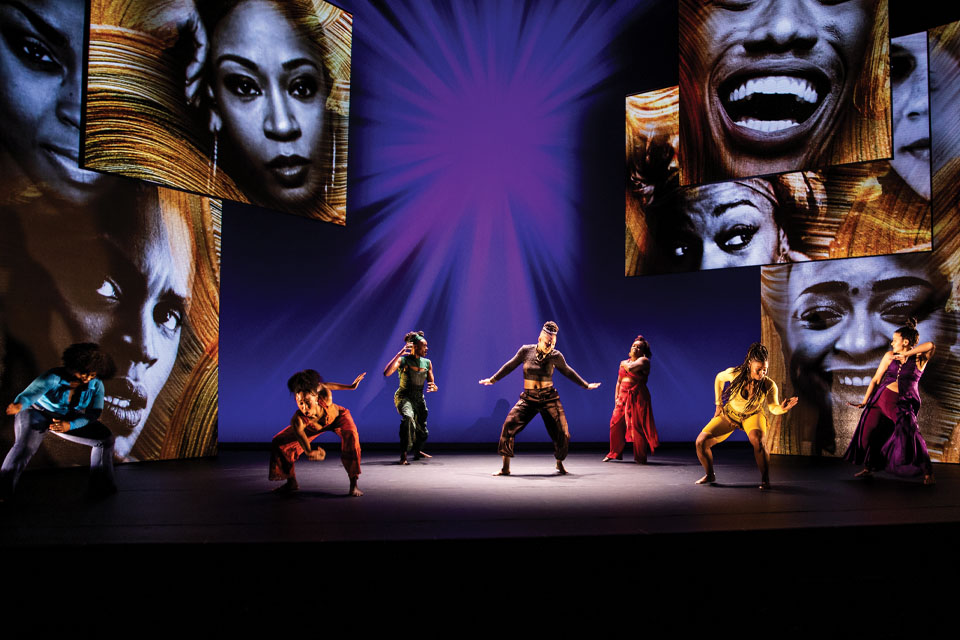
"for colored girls who have considered suicide/when the rainbow is enuf," 2022 / Photo: Marc J. Franklin
“‘For colored girls’ is over 40 years old and I was actually kind of freaking out about that because I knew that everybody knew the poem and the show,” Brown said. “It was highly regarded; dearly loved. I was a little nervous, and I didn’t want to disappoint. But one of my friends told me: ‘Don't think of it as anything else but an offering.’ It shifted my entire perspective and changed my thinking. It took me out of the space of trying to make it something and just let it be what it was inside of my mind. And that's the offering of the show.”
Audiences got a look at some of Brown’s new offerings this summer: her choreography in the Shakespeare in the Park production of “Hamlet” and for the new Broadway-bound show “Hippest Trip — The Soul Train Musical” at American Conservatory Theater. Looking into 2024, Camille A. Brown & Dancers will premiere a new work that takes up from where her trilogy left off.
Like Allen and Dunham, her trajectory is defined by a wide-ranging artistic vocabulary and a sweeping ambition to tell stories across the divide of different art forms and disciplines.
“Camille has this ability to situate a culture, a history, a vibe of Blackness into her work,” Dean Outlaw said. “There's something that's always very authentic about it. Her life would probably be easier if she went with the formulaic, repeating what has been successful in her work. But what I'm always impressed by is that her work never looks the same.”
When asked about how she keeps so many different projects on track while leading a dance company, Brown said she turned the “me into we,” just as her commencement speech encouraged UNCSA graduates to do: “Think about the “we” instead of “me”. We never do anything alone. Always think of yourself as a team player.”
For now, Brown continues focusing on her dance company and choreography.
“I feel like I'm holding two careers, but I can only do it because I have a team,” she said. “We're always crafting together. I’m proud to say that I have a community that I can tap into if there's a project or need advice. I have a pool of people that I know I can trust and that want the best for me.
“As an artist moving through this world, having the safety of a home base, a place where you can be yourself, is really key.”
Candice Thompson is a dance critic and writer living in Brooklyn. She has written extensively about dance for Andscape ArtsATL, The Brooklyn Rail, Dance Magazine and Fjord Review, among other publications.
This article appeared in the 2023 issue of Scene.
READ THE COMPLETE ISSUE
October 16, 2023

